Abstract
A simple `diary' technique has been used in London and in other large towns to examine the relationship between daily changes in the condition of bronchitic patients and their environment. It has been shown that these changes are closely related to air pollution, as indicated by the concentrations of smoke or sulphur dioxide. There is some evidence that patients are more sensitive to the effects of pollution at the beginning than at the end of each winter. Comparative studies are now being made in London at five-year intervals to study any change in response following the definite reduction in smoke concentrations. Results indicate some decline in the response of patients to specified concentrations of sulphur dioxide, but in recent years there have been few days on which pollution has been high enough to produce any response.
Full text
PDF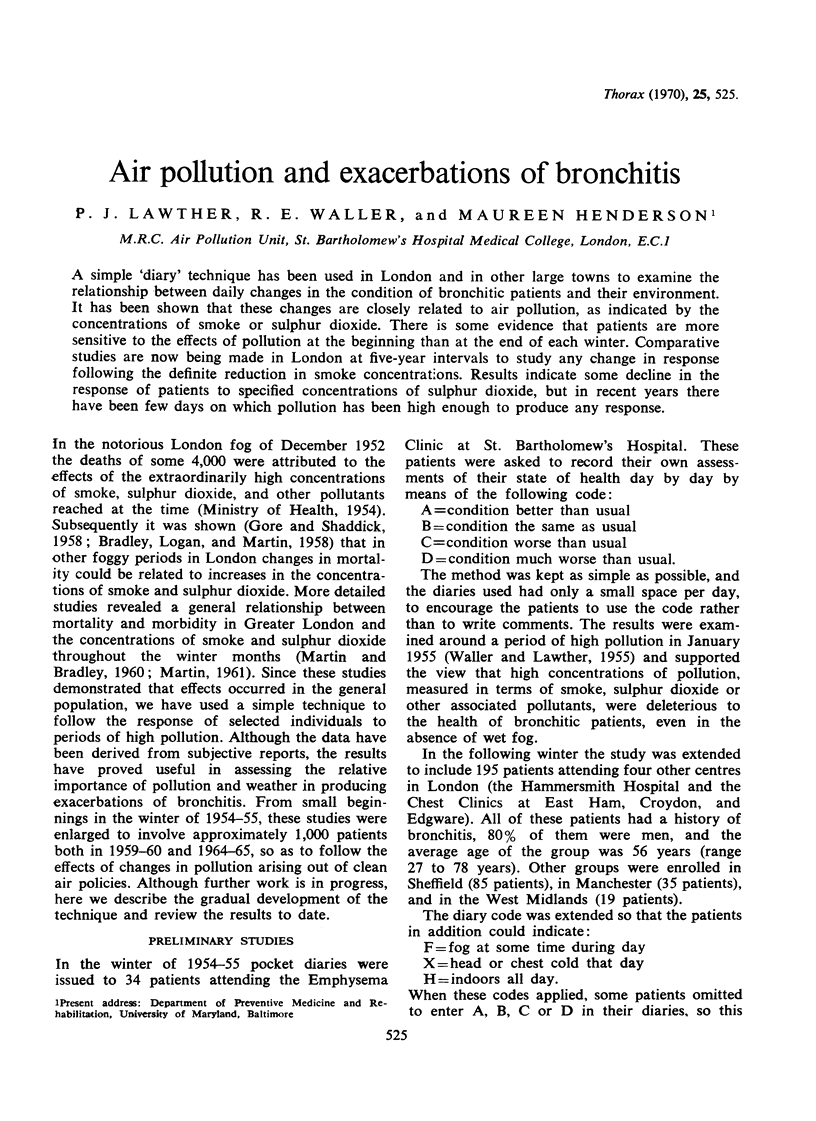
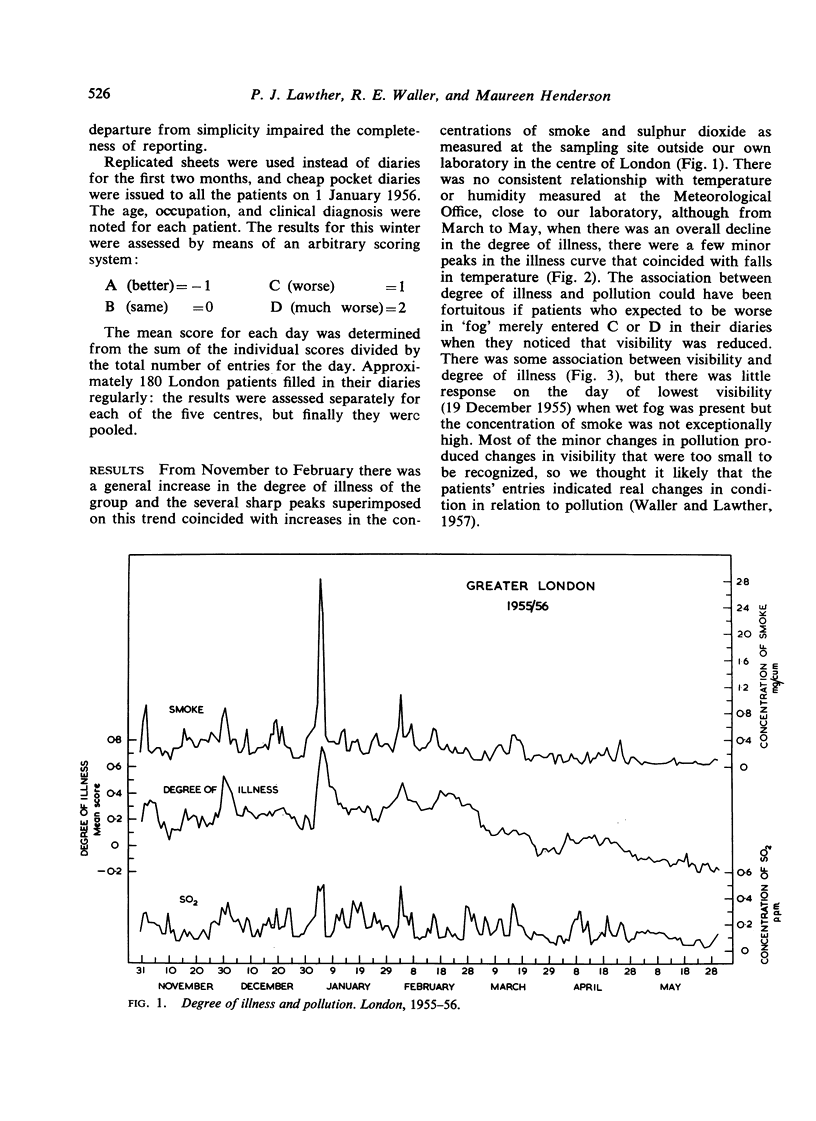
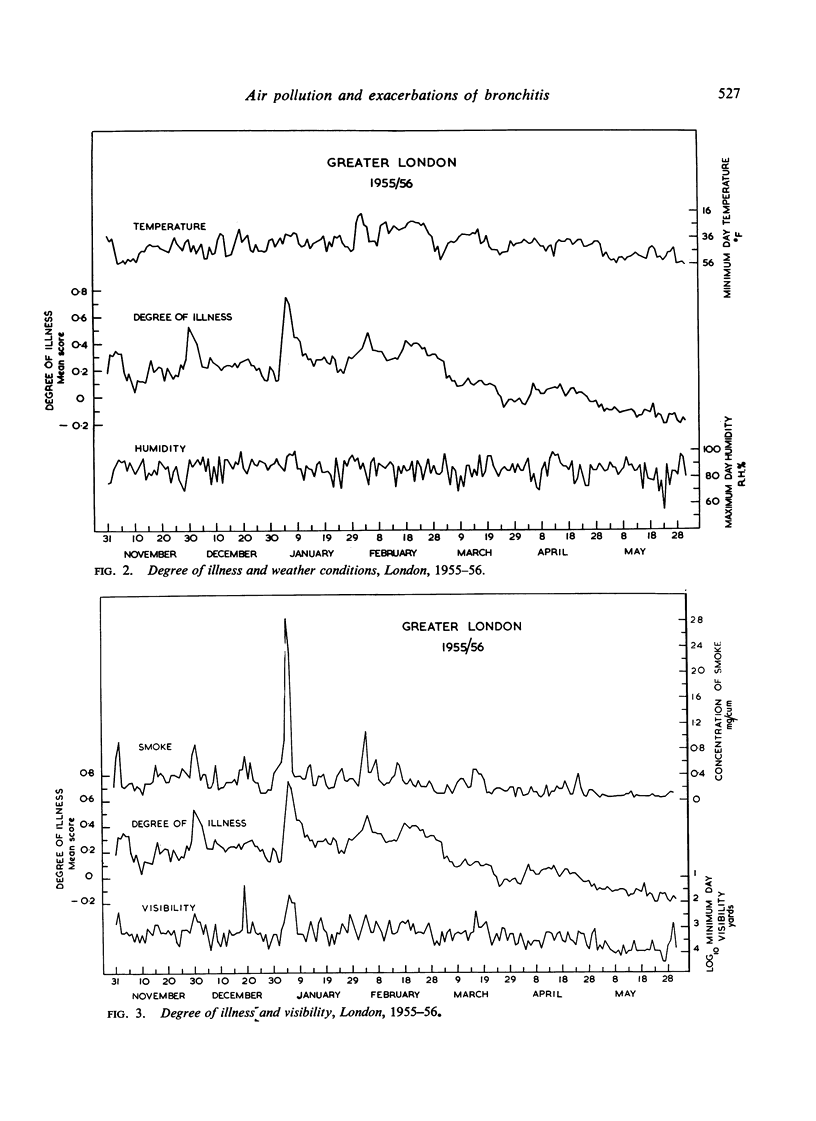
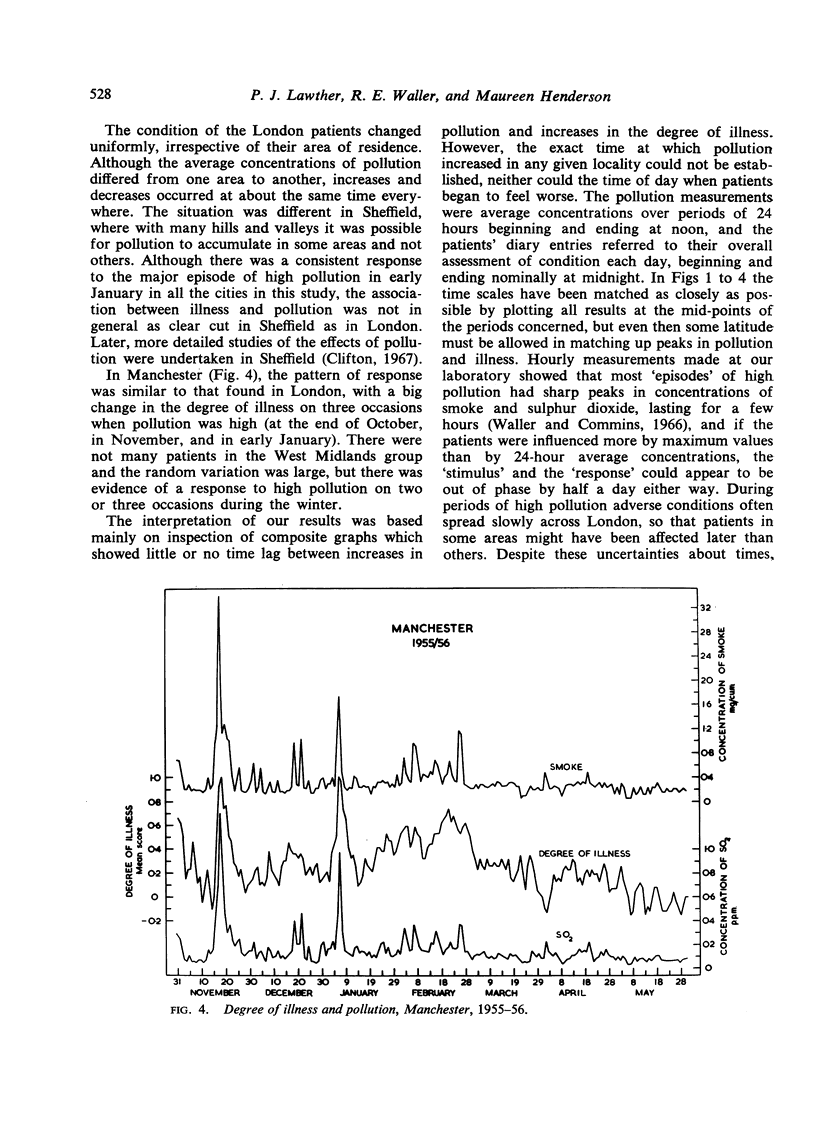
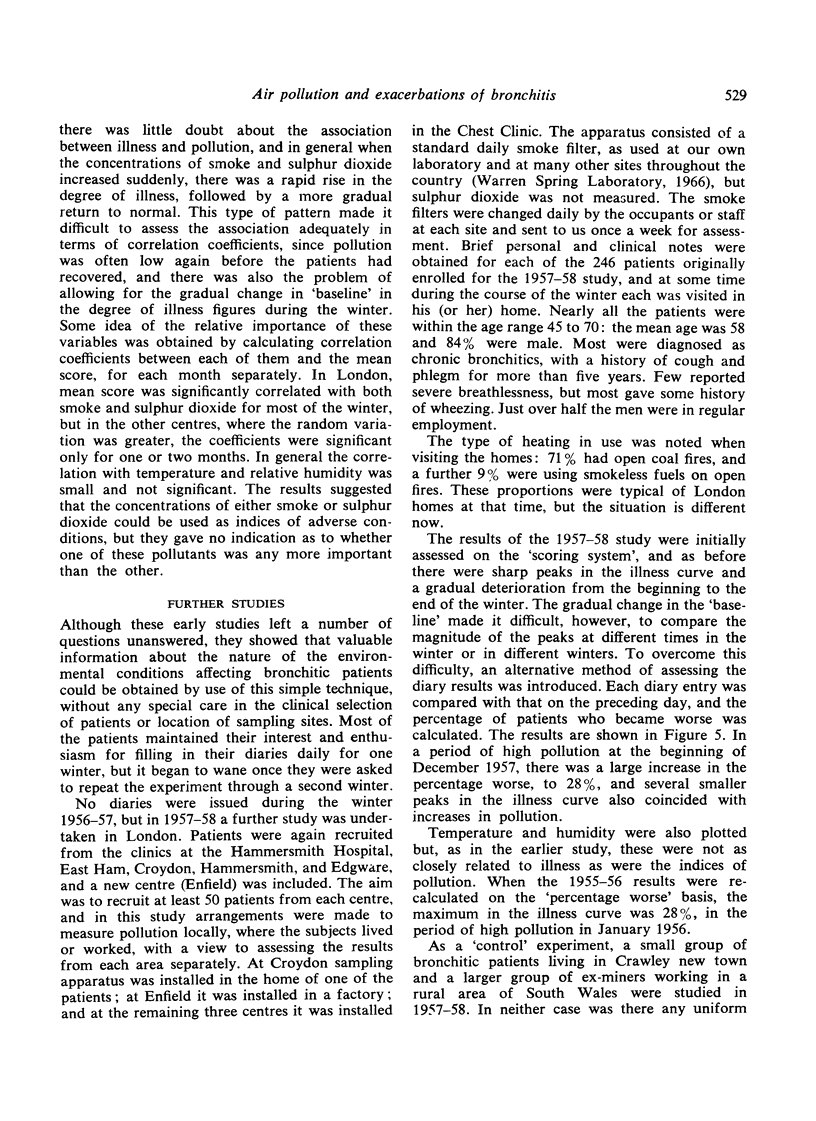
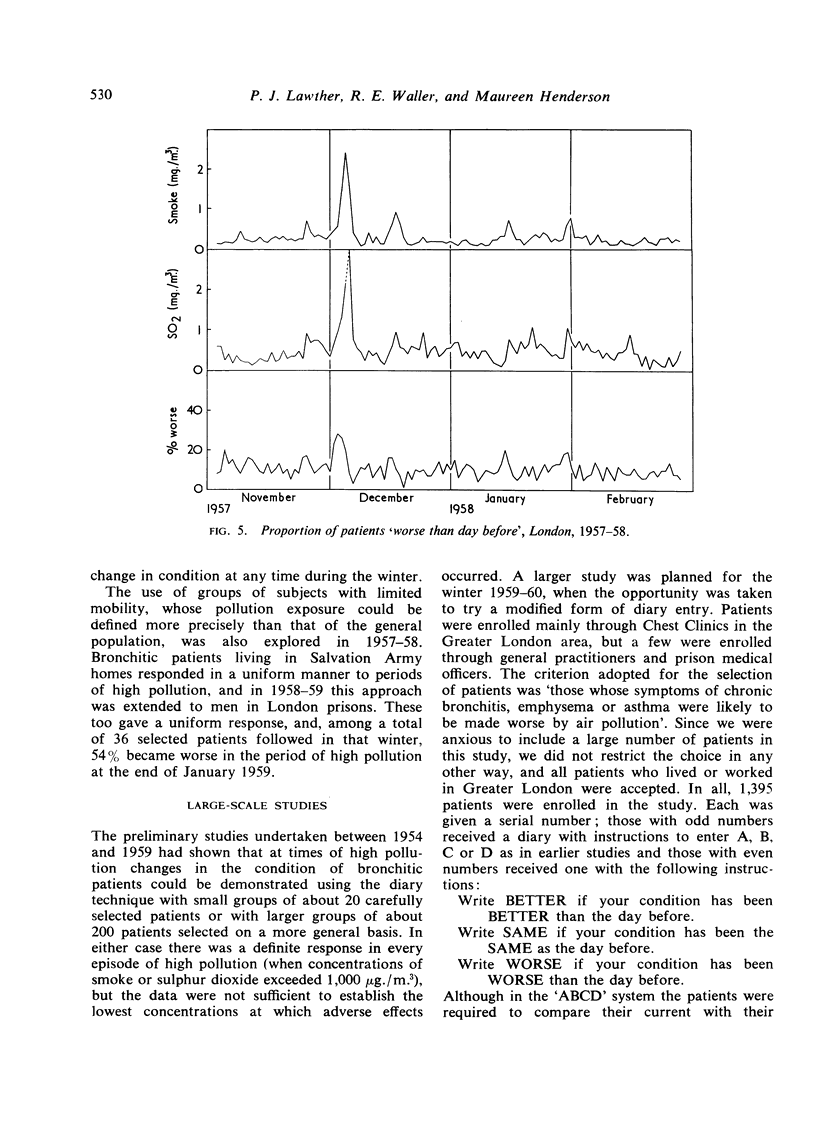
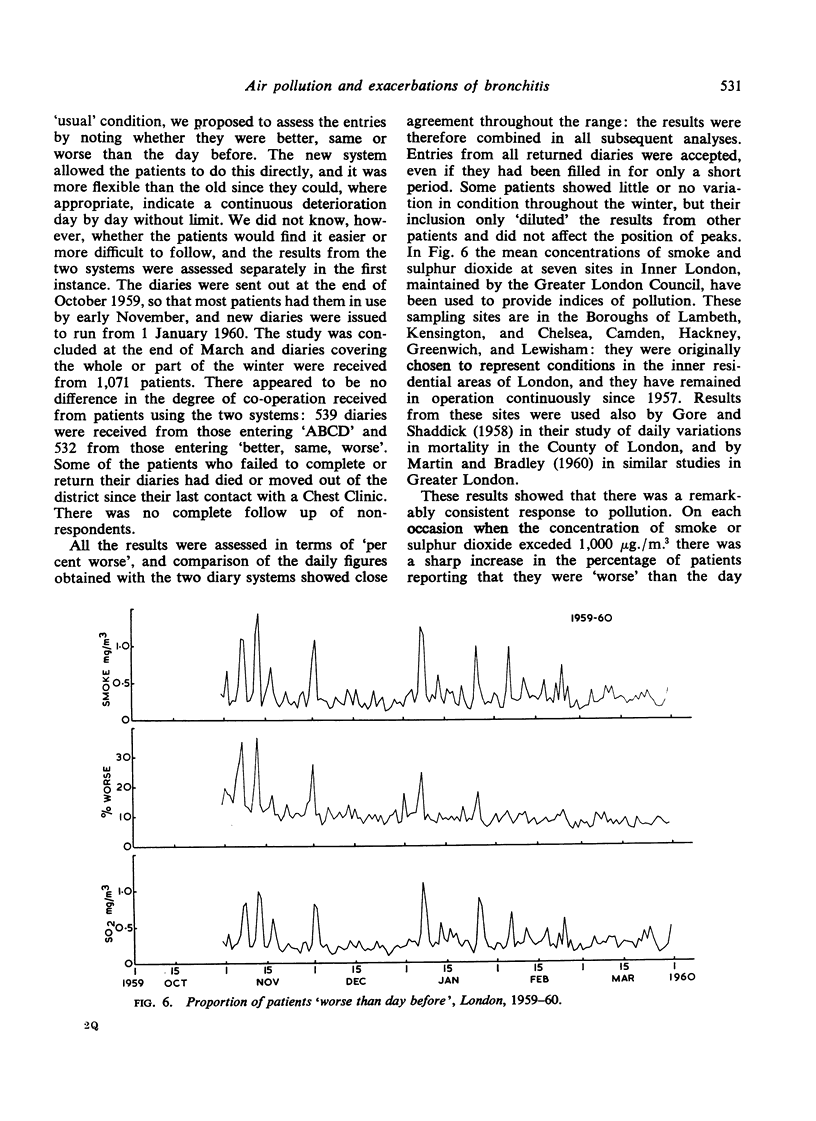
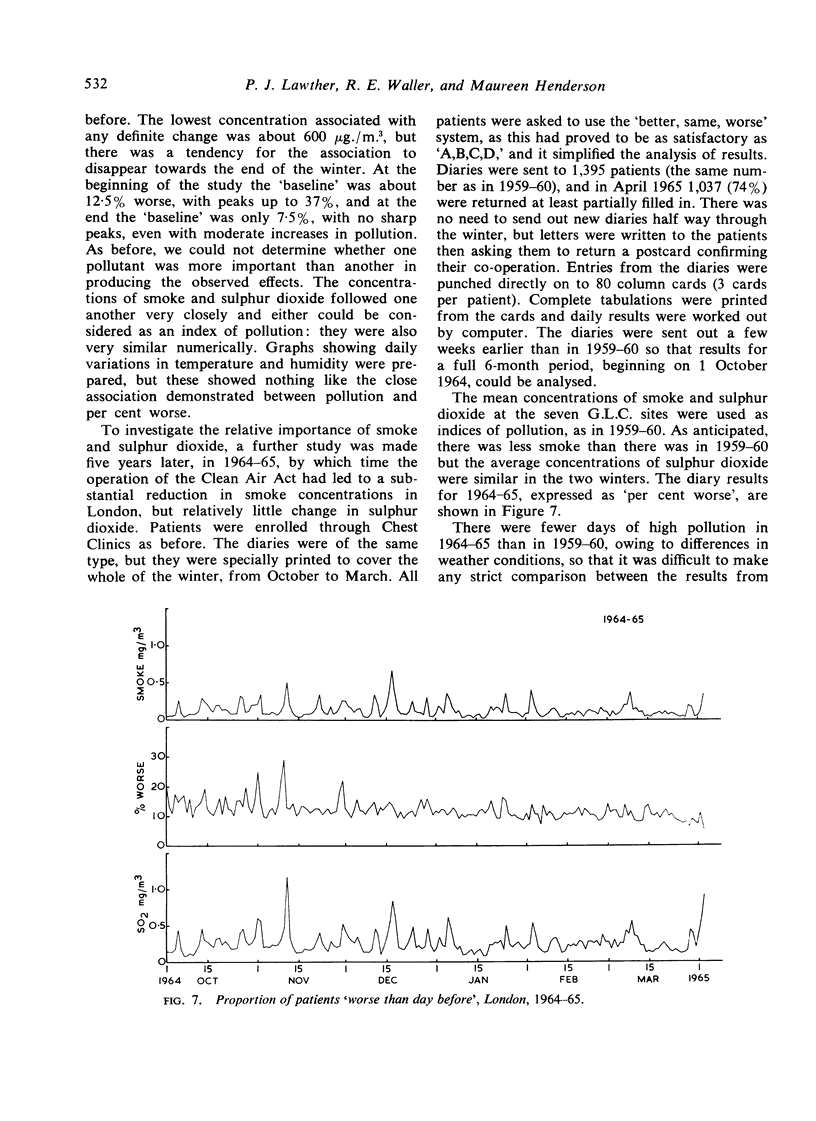
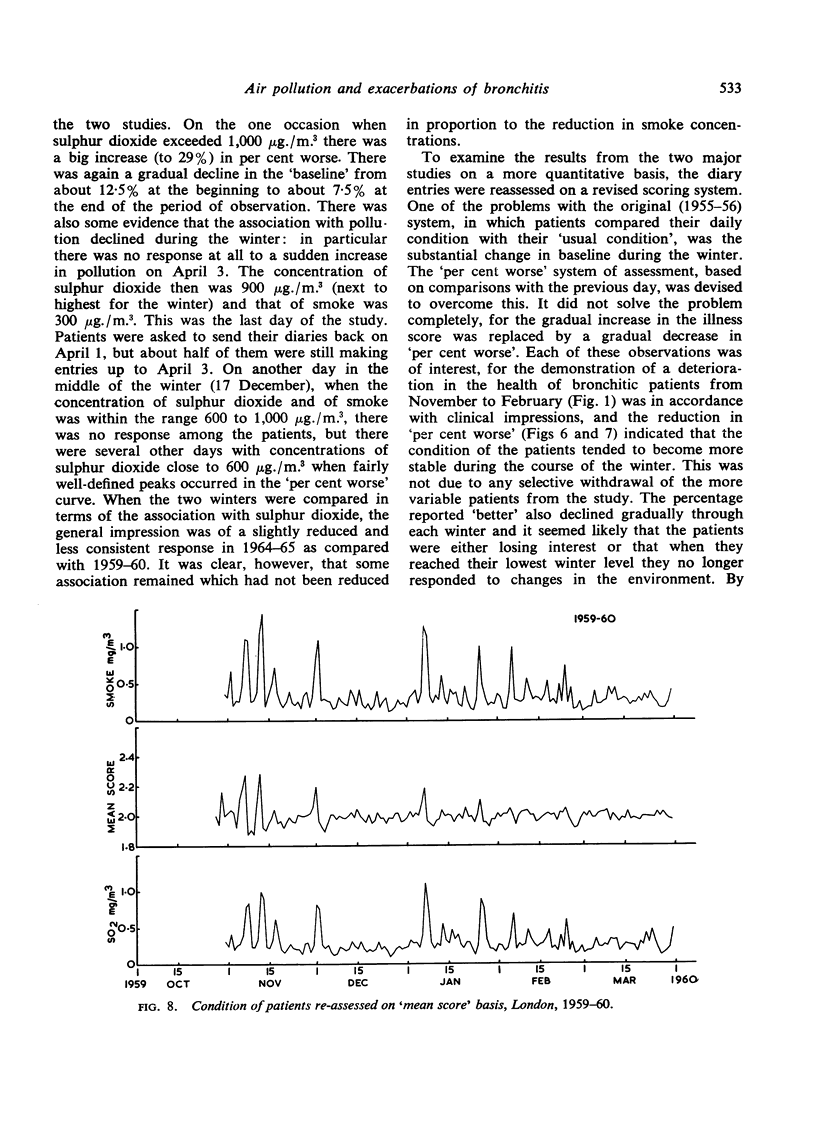
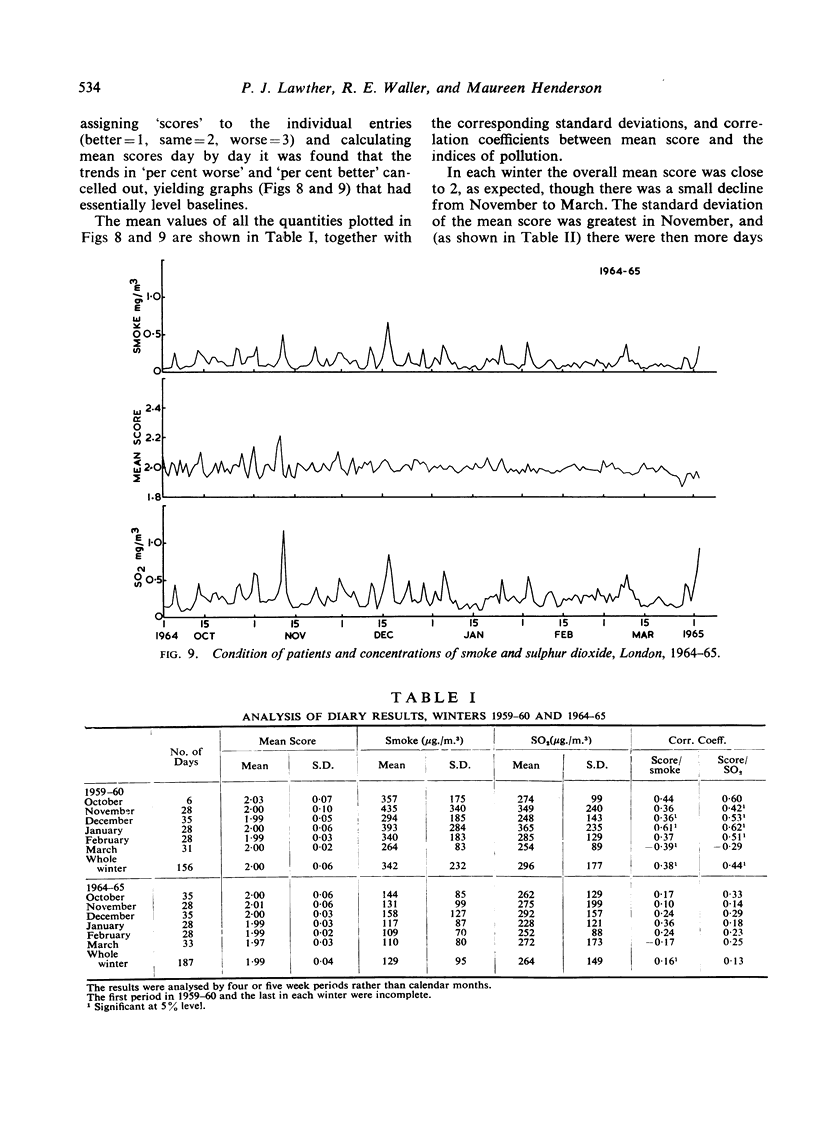
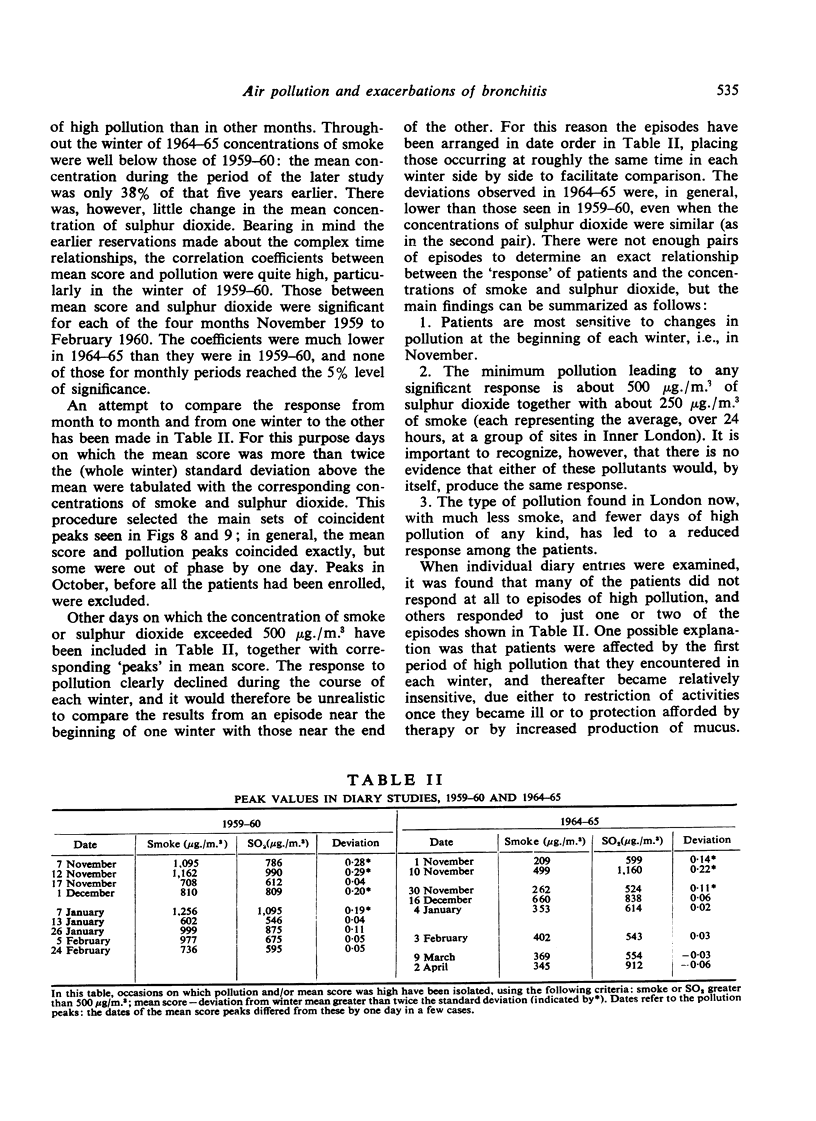
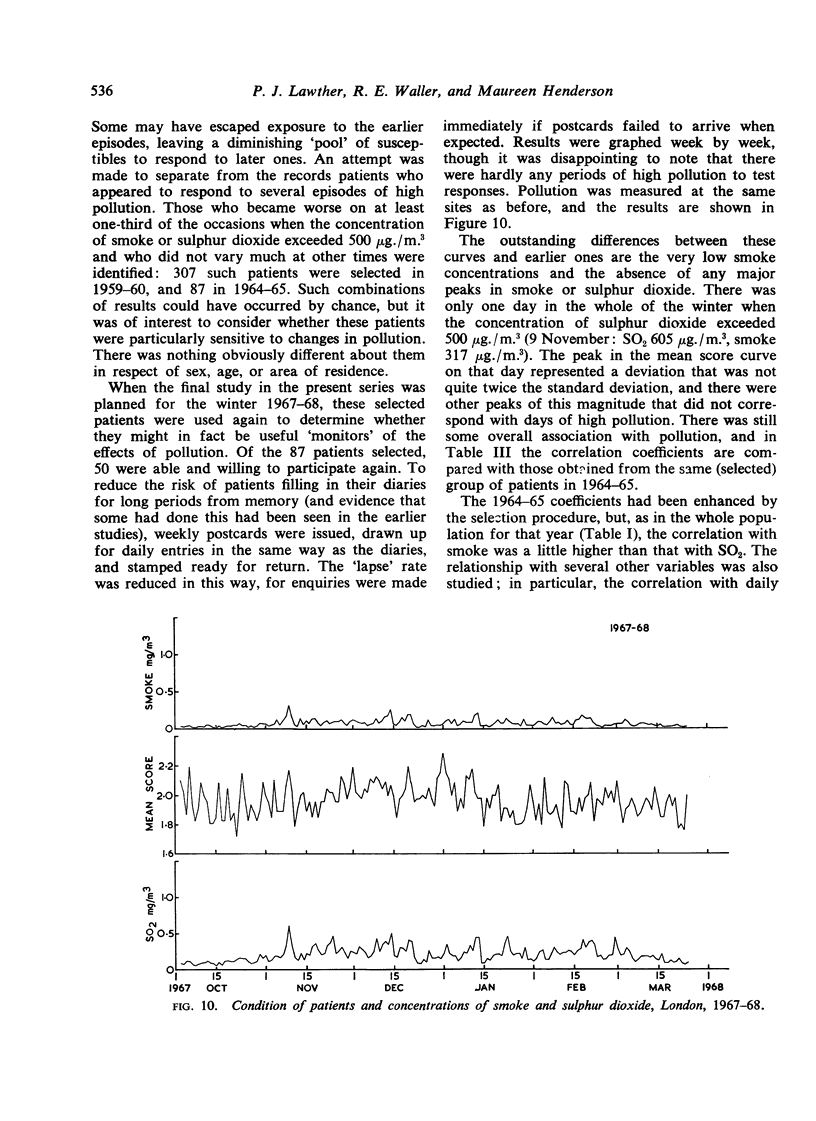
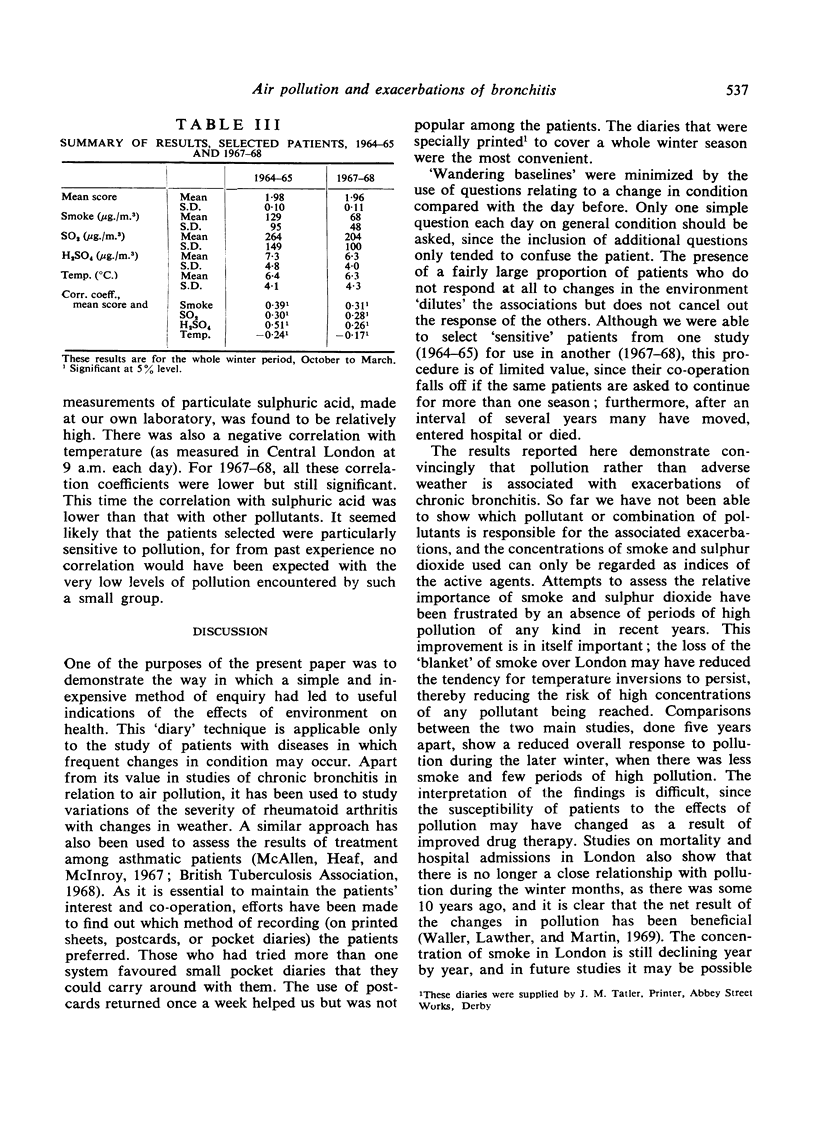

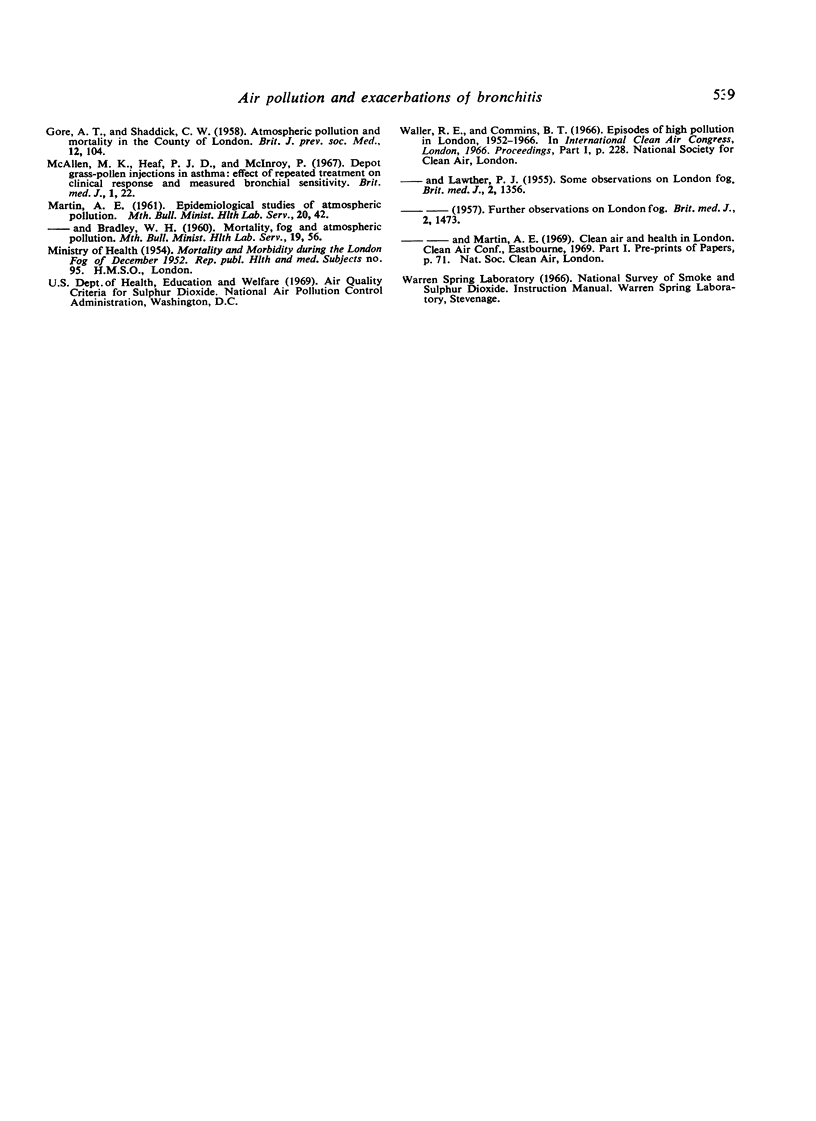
Selected References
These references are in PubMed. This may not be the complete list of references from this article.
- BIERSTEKER K., DE GRAAF H., NASS C. A. INDOOR AIR POLLUTION IN ROTTERDAM HOMES. Air Water Pollut. 1965 Jun;9:343–350. [PubMed] [Google Scholar]
- BRADLEY W. H., LOGAN W. P., MARTIN A. E. The London fog of December 2nd-5th, 1957. Mon Bull Minist Health Public Health Lab Serv. 1958 Jul;17:156–166. [PubMed] [Google Scholar]
- GORE A. T., SHADDICK C. W. Atmospheric pollution and mortality in the Country of London. Br J Prev Soc Med. 1958 Apr;12(2):104–113. doi: 10.1136/jech.12.2.104. [DOI] [PMC free article] [PubMed] [Google Scholar]
- WALLER R. E., LAWTHER P. J. Some observations on London fog. Br Med J. 1955 Dec 3;2(4952):1356–1358. doi: 10.1136/bmj.2.4952.1356. [DOI] [PMC free article] [PubMed] [Google Scholar]


